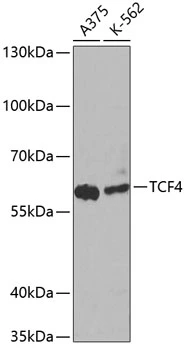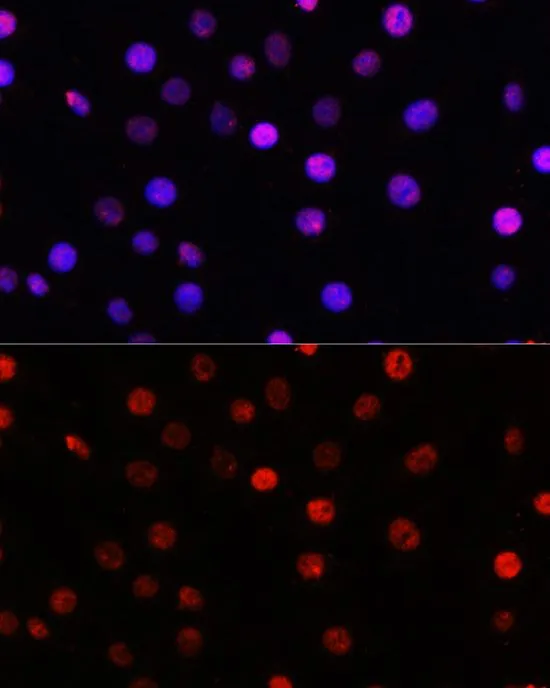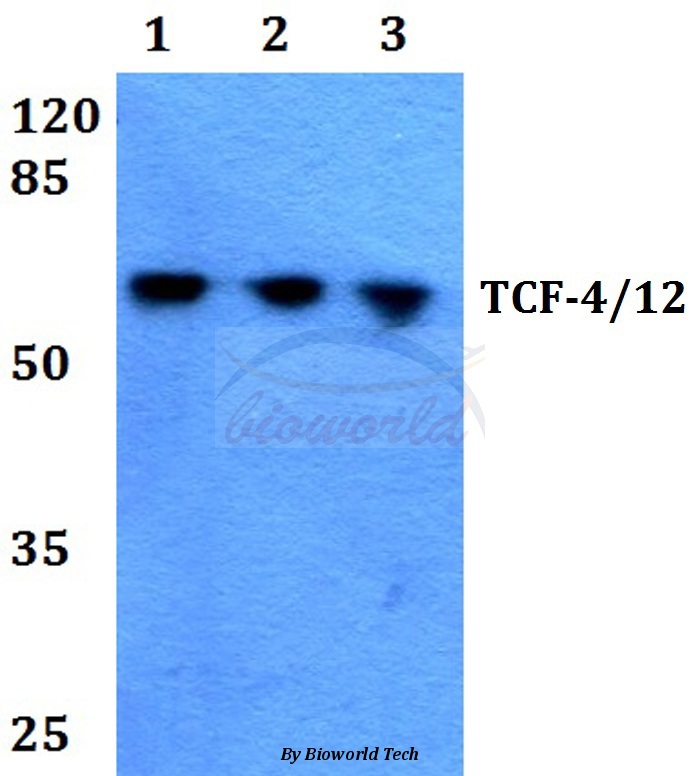
WB analysis of various sample lysates using GTX16385 TCF4 antibody. The signal was developed with ECL plus-Enhanced. Dilution : 1:1000 Loading : 25microg per lane
TCF4 antibody
GTX16385
ApplicationsImmunoFluorescence, Western Blot, ImmunoCytoChemistry
Product group Antibodies
TargetTCF4
Overview
- SupplierGeneTex
- Product NameTCF4 antibody
- Delivery Days Customer7
- Application Supplier NoteWB: 1:500 - 1:2000. ICC/IF: 1:50 - 1:200. *Optimal dilutions/concentrations should be determined by the researcher.Not tested in other applications.
- ApplicationsImmunoFluorescence, Western Blot, ImmunoCytoChemistry
- CertificationResearch Use Only
- ClonalityPolyclonal
- ConjugateUnconjugated
- Gene ID6925
- Target nameTCF4
- Target descriptiontranscription factor 4
- Target synonymsCDG2T, E2-2, FCD2, FECD3, ITF-2, ITF2, PTHS, SEF-2, SEF2, SEF2-1, SEF2-1A, SEF2-1B, SEF2-1D, TCF-4, bHLHb19, transcription factor 4, SL3-3 enhancer factor 2, class B basic helix-loop-helix protein 19, immunoglobulin transcription factor 2
- HostRabbit
- IsotypeIgG
- Protein IDP15884
- Protein NameTranscription factor 4
- Scientific DescriptionThis gene encodes transcription factor 4, a basic helix-loop-helix transcription factor. The encoded protein recognizes an Ephrussi-box (E-box) binding site (CANNTG) - a motif first identified in immunoglobulin enhancers. This gene is broadly expressed, and may play an important role in nervous system development. Defects in this gene are a cause of Pitt-Hopkins syndrome. In addition, an intronic CTG repeat normally numbering 10-37 repeat units can expand to >50 repeat units and cause Fuchs endothelial corneal dystrophy. Multiple alternatively spliced transcript variants that encode different proteins have been described. [provided by RefSeq, Jul 2016]
- Storage Instruction-20°C or -80°C,2°C to 8°C
- UNSPSC12352203









